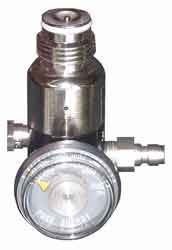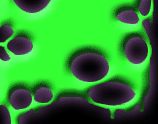|
Paintball can be a complicated sport. Form ball bore sizes to barrel types, to CO2 pressure, to proper safety; paintball has a lot of issues that from time to time can be a little confusing. This area will contain tips, hints, tricks, and general info that I hope will be useful to everyone and help us grow into more professional and efficent players of the sport. If you have a tip, feel free to e-mail the webmaster at checkyourself@hotmail.com.

What exactly is a regulator?
Well, the first thing you might ask about a regulator is... What does it do? The basic, aftermarket regulator's purpose is to control or "regulate" the p.s.i.(Pounds per Square Inch) of gas entering the gun at one time. So, how does it work? It works by using spring pressure to prevent too much "air" from entering the marker. The spring presses on a piston with a valve attached at the end. When the regulator is at rest (No air) the valve is held open by the spring. When "air" is introduced the pressure from the tank forces the valve closed after a certain p.s.i. is allowed to pass through the valve. (according to how tight the spring is) Then the spring isn't strong enough to hold the valve open so it closes. When the gun is fired the pressure inside the reg. suddenly drops and the valve opens back up. Then the system starts all over again. This entire process causes much more consistant shots by controling the p.s.i. entering the gun. Many regulators are adjustable. The tension on the spring can be tightened, much like a rear velocity adjustor, with a screw. This can be used to achive the desired amount of pressure and a consistant shot. Using this in conjunction with an expansion chamber can cause your gun to be extreamly steady in velocity and we all know... that the straighter our markers shoot, the more times we will hear "Dead man walking!" coming from the other team. Hope this was informative and remember, "You got to REGULATE, Homies."
-Matt Houston
|

